Transcription Anthology Festival Team and Judith Torres
Images Anthology Festival 2021
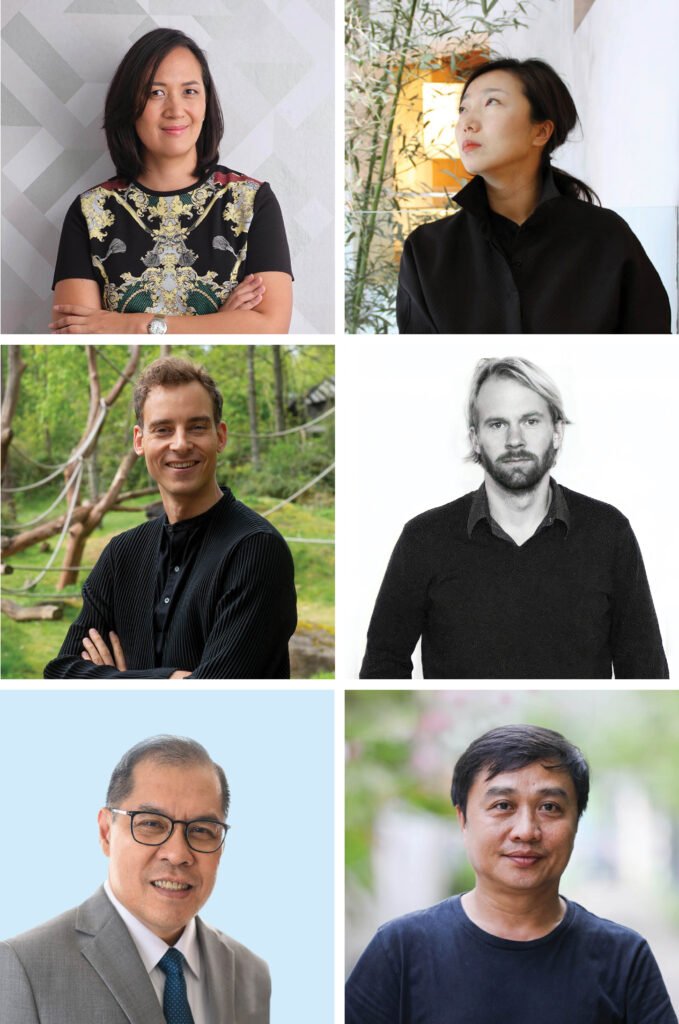



- Hosts of WTA Architecture and Design Studio:
- Arvin Pangilinan
- Berly Locsin
- Alexa Arañaz
Arvin: We’ve had a year of lockdown because of the pandemic; how is it changing our cities?
Martijn de Geus: One of the most apparent changes I see in Beijing and the cities here is that they no longer expand by making new buildings. There is much more reuse and retrofitting of neglected old buildings and left-over areas now recognized for their potential to add value to the city. I see that happening a lot, whether it’s left-over urban spaces or old, dilapidated buildings being refurbished. So, that’s one significant change—revaluing what is in the city and repurposing things that didn’t seem so promising at first.
Joel Luna: The pandemic awakened us to the deficiencies of Metro Manila. We’d been experiencing them pre-pandemic, but COVID highlighted them. First, mobility, since public transport was hobbled during the lockdown. People saw how unfriendly the cities are to pedestrians and cyclists. Second, we—by that, I mean the general public and many developers—were forced to recognize the value of open, outdoor space. Our planning philosophy for so many years has been to create cities where people prefer to be outdoors rather than indoors. Now, because of the pandemic, it’s become a necessity.
Sadly, outdoor space is not uniformly distributed to people in the metropolis. Marginalized groups have less access to open space that is absolutely necessary in times of crisis, while the affluent sectors have that privilege in spades. COVID highlighted that inequality in Metro Manila. So those two items are quite top of mind.
Jason Hilgefort: What I find interesting in the Americas and the European cities—and not in Hong Kong, where I’m sitting—is this blending of indoor and outdoor. Suddenly, restaurants have the right to take over parking spots and sidewalks, and governments are closing streets and starting to have discussions about how that might become permanent. And it’s not just about taking back public space for private, but also a kind of a blurring of the two.
Unfortunately, our government in Hong Kong hasn’t done any of that despite the restaurant industry being devastated. Still, many urban residents like myself, because Hong Kong has a peripheral edge that’s quite rural in character, do precisely what I just did today—go out to the rural edge and hike around some of these remaining Cantonese villages. Those villagers, at first, were excited to have some of that “tourist dollar.” But now there’s been pushback from the villagers, who’re saying: “How come all these people are all coming here?”
Another reality is Hong Kong is part of the Pearl River Delta. And the reality of our borders or its porosity, depending on your visa, gets really layered. Not to mention, now, depending on which job you got, who is allowed to cross borders. So even an idealistic version by people here, including myself, talking about the mega region that is the Pearl River Delta or the Greater Bay Area, you start to be reminded that these imaginary borders have real consequences going forward in terms of mobility.
Denise de Castro: I’m really optimistic to see how our cities will change after COVID. Everyone’s need for open spaces was talked about at length in the talks yesterday and has been heightened by today’s speakers too. As well as food supply and urban farming, which is tied to open spaces. Having these green open spaces will also help improve mobility, which some speakers brought up.
People are looking again at walking as an essential means of mobility, bicycling, and moving away from a car-centric culture. This is a positive thing. The pandemic is forcing our hand, so to speak, to make our cities more liveable, pedestrian, mixed-use, essentials not far from home and work. I’m hopeful this will be the norm. People are going to look to live in their pocket communities and generate opportunities in those areas. Hopefully, these needs are translated into legislation and then filtered into the developments by private developers. I’m really hoping what we learned from this crisis doesn’t go to waste.
Manh Nguyen: Hello everyone. I’m Manh from Vietnam. Luckily, as of now, we’ve been able to contain the spread of COVID. We have 90 million inhabitants in Vietnam, with less than 3,000 people infected. We enforced social distancing and closed down bars, karaokes, and so on, three times. Everything feels normal again today. On the other hand, we have a very long border with China, which our government so far has controlled very well—managing the movement of people in and out of the country. We check and we quarantine people coming in for fourteen days.
So, it seems to me, I didn’t learn much different about our context because of the COVID pandemic. We are lucky we know what we know from studying Architecture and Design, being aware of the effects of living in the city, the lack of open space. The ratio of square meters of open space is small in Vietnam, I think, compared with other countries. Therefore, as an architect, we think on a small scale to keep the balance between built and open space. In particular, designing individual houses and residential buildings and giving people a little bit of positive life through landscape integrated into the building. That’s my little bit.
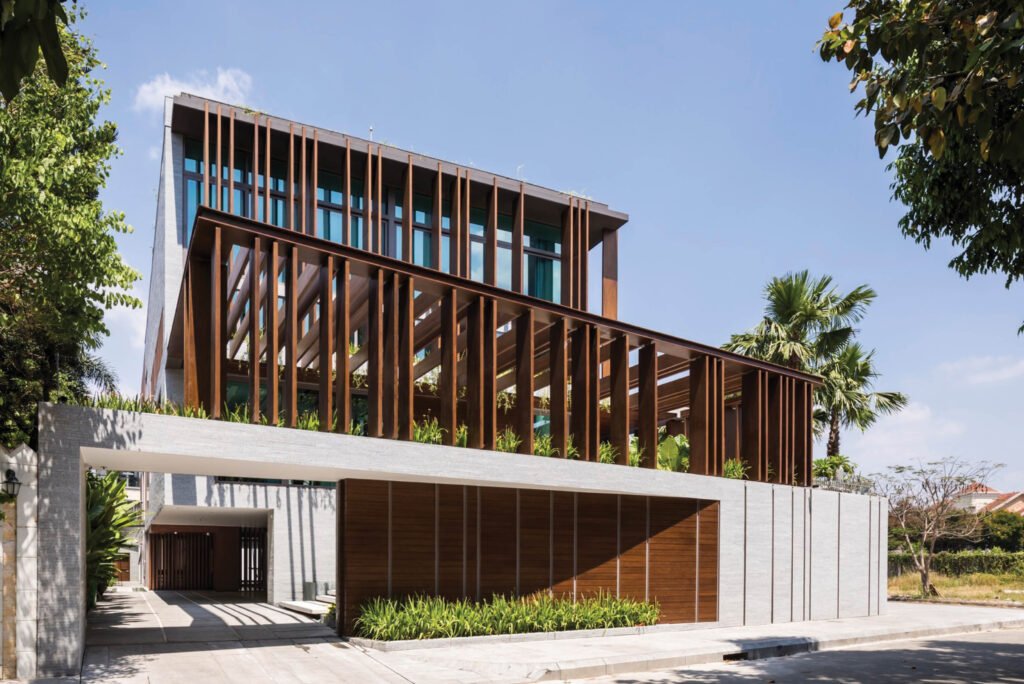

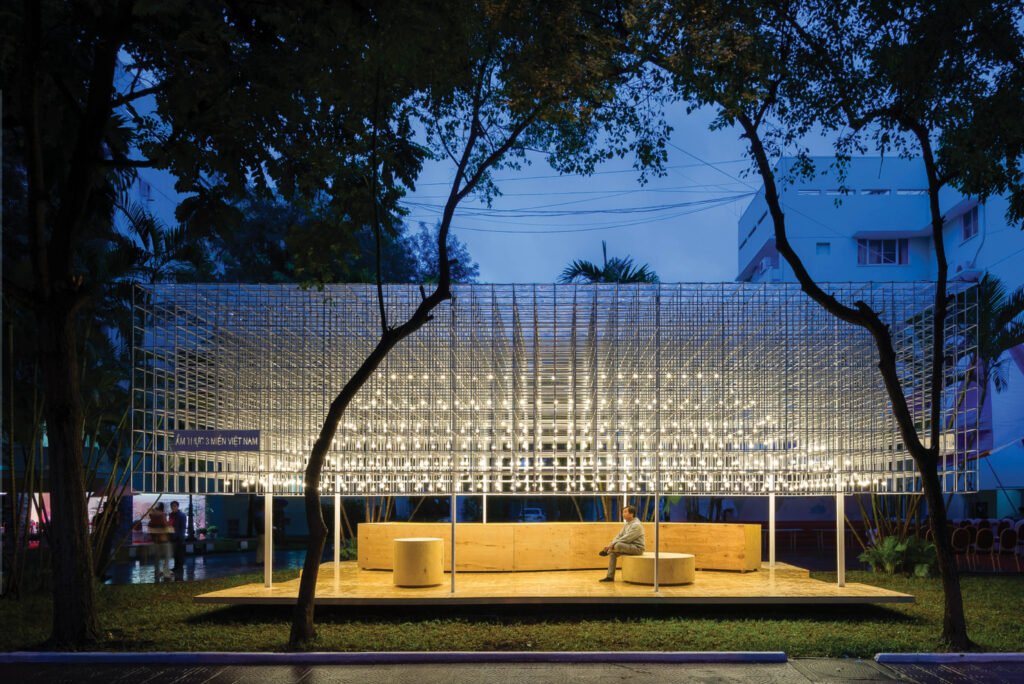


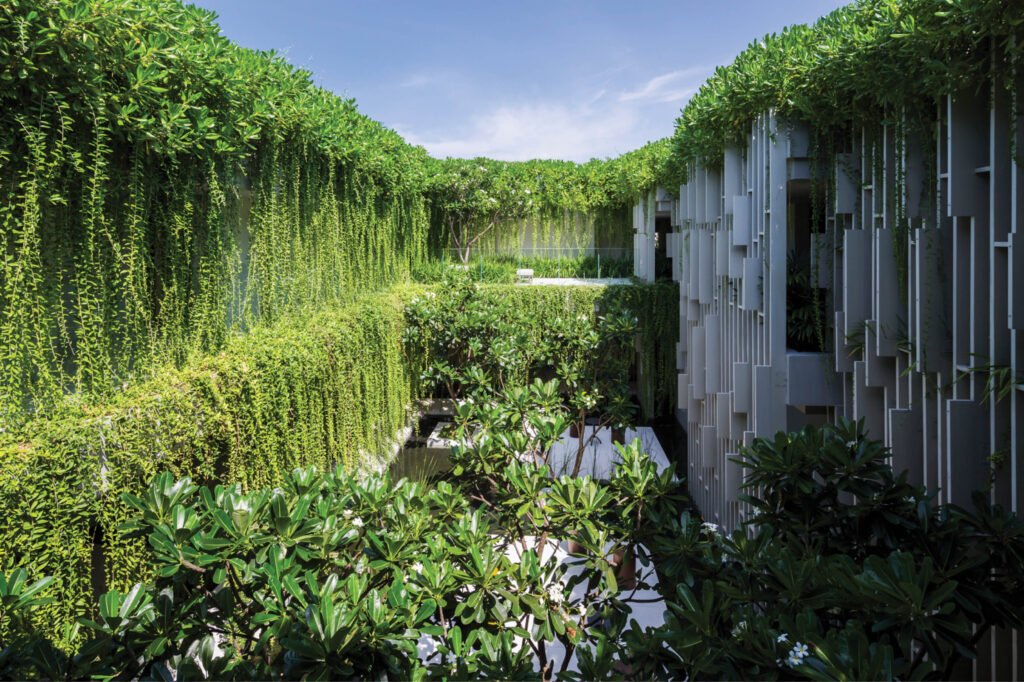
Moderator – Alexa: Shall we ask for a reaction from Judith?
Judith Torres: Where’s government? Where’s big business?
William Ti: Oh, you should’ve been here yesterday!
Judith: It’s almost futile to hope that people by themselves will address mobility, spatial inequality, urban farming, and all of that. Mobility alone—infrastructure, bike lanes, and sidewalks—where is government in the discussion? And since we can’t rely on the government, where’s big business?
William: Florian, any reactions, or better yet, provocations?
Florian Heinzelmann: Yes, of course. I find it very interesting looking at the background of the people in the panel—the Netherlands, Vietnam, Philippines, obviously, me with my experience in Indonesia, and yeah, Hong Kong, China, and Jason already mentioned the Delta. So everybody here speaking today in a way has a sort of biophilic, if not biocentric, “back to nature” theme.
Then, what Martijn mentioned about refurbishment happens a lot in Europe, but I don’t see that so much here in Asia. Especially in the developing countries, like the Philippines and Indonesia, it’s still about building a lot of new cities. So having moved to Singapore two months ago, you know, it’s a city with a lot of reclamation happening. So, we have the giant seawall proposal to protect Jakarta from flooding, and of course, this project should be financed by land reclamation. And we have William Ti here, who recently proposed Horizon Manila, which is actually, I must say, an astonishing fast-tracked thing because if you think about it, it was in 2020 he won the competition. In 2021, they want to dredge in this thing called shoal something. We, too, have similar things going on in Jakarta and in Penang. And Jason, you too?
There is enormous pressure on cities and people migrating, and, of course, this pressure is much different in the Southeast Asian nations than it is in Europe, which needs migrants for growth. Now, I would like somebody like Joel to react because I looked at your home page. I find it quite interesting that you have a proposal for Manila 2060. You propose food production, garbage waste management, all on a floating city, versus a bit more developer-driven, developer-friendly dredging and maybe sort of impacting the marina life in the bay.
Joel: It’s a concept we had for Manila Bay. The reality is, it’s a response to megatrends influencing Manila. We’re not saying that that is the most feasible solution, but hoping it would address certain things. Now, what are those megatrends? COVID is one instance. The big trends impacting urbanization will remain. Like, for example, demographics. We’re all aware of the movement of people towards cities. By 2050, Metro Manila is projected to have a population of 23 million. That’s nine million more than we have now, right? The total Philippine population will be about 150 million. Right now, only about 50 percent of the Philippine population is urban. The projection is by 2050, two-thirds of 150 million people will be living in cities. And we can imagine that most of them will be in Metro Manila, so 23 million people in Metro Manila. Can you imagine that?
The scarcity of land, the impact of the megatrend in demographics impacts mobility. We are already struggling with mobility in Metro Manila; what more if you add that nine million? And that’s the night-time population, by the way. The daytime population will be even greater. Imagine what would potentially happen to the movement of goods, people, and ideas. Cities attract people. No matter how severe the situation is in Metro Manila, people still come because it’s a place to exchange goods and ideas—that’s what cities do. So, in the future, with all these major trends, barring any severe shock, we have to think about how the city can continue to do what it does best, which is the concentration of people generating ideas to make everything better for everyone.
Florian: How do we see this implemented? You wrote an article about flood lanes and the soft border between water and green in the shoreline, mangroves, and so on. And the impact of something completely reclaimed. How do we see this one?
Joel: Well, for that idea we proposed, it was really floating. It wasn’t reclaimed. And in fact, we wanted to step lightly on the land, given the situation in Manila Bay right now. So we wanted a restorative approach—allow the bay to recover, cleansing the water, gathering the nutrients off of the estuaries and river systems, you know, taking a bit of biomimicry, we likened it to a water hyacinth which cleanses the water, gathers energy from the sun, so on and so forth.
Denise already mentioned the problem with food, and we felt that during the lockdowns. With food supply chains hampered, how do we bring food production closer to the cities? This one is what we propose, it’s probably extreme, but sometimes you need to show extreme ideas to bring home the point, right?
Martijn: I want to add something here before we talk about impossible scenarios of floating cities and so forth. If we really want to talk about our changing cities, the problem is our cities have become unliveable, unaffordable, and without help. Young generations that grow up in cities have no future there; they cannot even put their children out to play because the city is too polluted, too dangerous. They are too far away from any public facility; they need to spend hours in underground subways to go to whatever terrible office building they need to work in.
The problem of our cities is not a problem of architecture. It is a problem of planning space, but it’s mostly a problem of people. So, let’s talk government and big business. Han and I are based in Beijing. I’ve been here ten years, and the amount of positive change that I’ve seen in that ten years is like nothing I’ve ever seen in my life. When I came here ten years ago, there was no high-speed train, zero. They now have the fastest, the largest, the most extensive high-speed train network that connects to rural, undeveloped areas with centers of large economic potential.
The Chinese government, together with businesses, together with institutions, like where I’m teaching, Tsinghua University, they’ve been able to lift 300 million people out of poverty, increased living standards in the city dramatically, increased open spaces, and green spaces, and increased infrastructure and accessibility. On top of that, the market has also seen all that potential.
And yet, despite all that extreme and enormous effort, cities have still become more and more unliveable. It’s unaffordable to buy a house here. We can’t buy a house here, and we have a good salary. If we think about moving to Holland, we could buy a house there, I guess we could. But do we want to live there now? The amount of hate between people of different socio-cultural backgrounds in the Netherlands is insane. Why would you want to live there? And I think that’s a big problem.
Are our cities in line with what people need and what people want? That’s the big challenge, I think. I’m not so concerned about making new, beautiful architecture. I’m thinking about how we can help people in the cities live a better life.
Han Zhang: In line with what Martijn said, since we are operating in a country where it’s big government, you realize more and more that as architects, in terms of what we do, how truly powerless we really are to effect big change. I mean, we have the skills to facilitate the big change, but no architect will go out there and make big change.
Right now, the most influential forces in society are the government, the general public, and big business—in different orders from different countries, of course. And I think the example you can see here is that number one, we have big government.
But at the same time, the general public is very important in China despite what you read in the papers. Because when the government makes decisions, they’re very informed about what the general public is thinking, what they are dissatisfied with, and what they are satisfied with. It’s far from perfect, but we see it all the time, you know, policies changing month to month according to what society is dictating at the time.
And you can see in certain circumstances, the effects of good government can be highly positive. For example, there is a lot of pressure in the cities of China, as everybody knows. Our top two cities are vastly overpopulated, very, very expensive. Like Martijn said, the aspirations of living in those cities are impossible for the younger generations to achieve.
So the government has gone out and taken an enormous effort to develop the second, third, fourth-tier cities and give funds to the countryside to revitalize not just the infrastructure, but their natural resources—the local crops, the local produce. So not just to keep people in the countryside but to attract positive investment in the countryside.
So, you know, it’s much more about how can we, as architects, make the spaces better in cities. It has to be done in conjunction with these kinds of broader policies governments are willing to undertake. We have big government, but the same kind of efforts are not really seen in many Western governments. I myself lived most of my life in Australia, so I understand both East and West. And if we look at it, you know, the contrast between what is driving the government’s action in both of these countries, it’s so different.
Australia is a country that has the highest per capita carbon footprint in the world. It’s a vast country, very, very large, very wealthy, where most people live in urban centers. It may seem ridiculous to say that the urban centers in Australia, a country so vast with natural resources, are under stress, but, indeed, they are. And despite the amount of stress these cities have, I don’t see the Australian government doing anything close to the level of action to alleviate these pressures. Perhaps because they have a different form of government, but in both scenarios, China and Australia, architects are definitely not the miracle workers. They definitely do at least have the potential to facilitate the process.


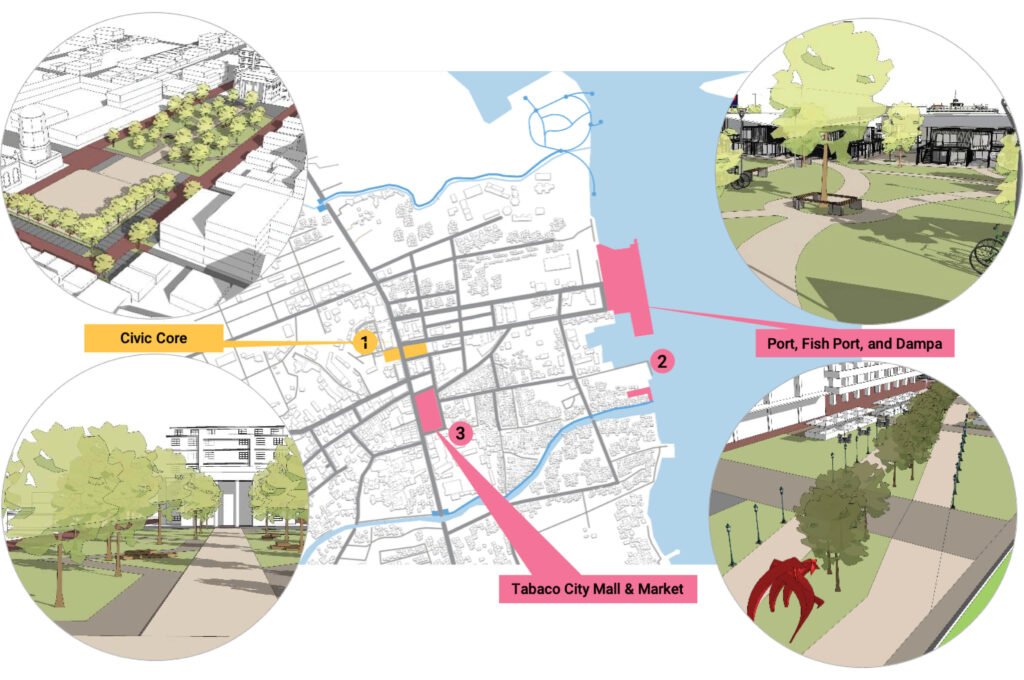

Moderator – Alexa: So, how do we persuade our developers, our clients, to actually create public spaces and not just any public space or open space, but barrier-free public spaces for anybody from any class to access. It’s really difficult because, you know, they’re always concerned about being profitable and all that.
Denise: I want to jump in about the countryside and secondary cities. That’s where we can find a lot of opportunities, especially here in the Philippines. Our firm has been working from home for a year; about a quarter of my team is spread out. They are working from north to south of Manila—they’ve gone home, and we can continue with this model. Hopefully, other companies will do the same, which may generate growth in the secondary cities. Instead of creating more growth in Metro Manila as a megacity, the secondary cities can really develop. Now is their opportunity to do that.
As Joel said, two-thirds of our population will be urbanized, but hopefully, the urbanization will happen in the secondary cities. Of course, it’s more difficult for us in the Philippines to create transportation links and infrastructure links because we are an archipelago. Still, hopefully, the government’s investments will connect cities through bridges, roads, and airports. And then we could, obviously, from developing the secondary cities, attract these liveable components and hopefully not make the same mistakes as Metro Manila, which are already happening in cities like Cebu.
So, there’s opportunity, but yes, we need action—and big action, right? And big collaboration because it can’t just happen independently from the government. It has to be a collaborative effort.
William: I want to chime about the inequality. Architects are always talking about developing the countryside, the suburban areas. Isn’t that like all of us here living in primary cities telling people outside to keep out? Like we’re saying, “We’re gonna make your communities better, just don’t come here.”
Florian: The same happens in Indonesia as well. We want to give people reason to stay where they are and not come into Jakarta to make it worse and worse and worse, I mean, Jakarta is well-off, but the worst to live in because of the pollution. But apparently, it does not seem to work at all. People are still coming here. What do you think is required to make this really successful?
Martijn: It’s to require that every society has equal chances and resources regardless of where they live. You’ve been to Holland. Holland is one big countryside. We have no megacities because it doesn’t matter where you live. Your neighborhood’s school is a great school. Your neighborhood’s hospital is a good hospital. Anything is available in your own area. And that’s a big, big challenge in Southeast and Eastern Asia because a lot of these resources, just like in Australia, are concentrated only in very few spots.
You know, in China, people come all the way from, like Xīzàng or Tibet to Beijing because the best hospitals are in Beijing. So they have now spread out much more with branch hospitals and universities to our second and third-tier cities. So I believe it is the equal distribution of these essential services in good quality that will work. So it’s not about preventing people from coming to the city but bringing the good that we have here in the city to you.
Han: I think that’s very, very important. I would think for most countries, it’s the government that should initiate the effort. Here in China, the government’s first was the infrastructure—I think everyone’s read it on the news—massive infrastructure to improve mobility for everyone in the country, which makes resources much more available to everybody. There’s a communist saying here, “Moderate prosperity for everybody.”
Meaning, have everyone enjoy a moderate level of prosperity. This means they had to make goods and transportation available to every household, whether you’re in the city or in the countryside. And they worked with big business for this to happen. So, for example, they built the roads and big companies like Alibaba who have their own logistics system, or JD.com. They had to guarantee that if the roads are put in there, if the internet is available, they have to be able to deliver there.
When you make these kinds of services available to people in the countryside, you know what, they can start their own business. They can take advantage of their local resources. So, for example, if I want to buy fruits, we don’t have fresh fruits or vegetables here because we live in Beijing. But you can go online and buy directly from producers very far off in the countryside, where they are produced. And they can do that because the government provided the roads. And the big businesses like Alibaba provided the platform for these people to sell their goods and provided the logistics, the delivery men to go and get the goods to the market.
These things are really, really important for the development of the countryside and second, third, and fourth-tier cities.
Manh: In the last three years in Vietnam, our government made it difficult for developers to develop projects in Hanoi. So, there’s now big competition between developers putting out bids to make satellite cities. It’s good news for Vietnam. In the next three to four years to five years, we will develop highways to connect satellite cities and principal cities. So, therefore, developers are like the big players in the market. They not only develop residential towers. The projects are like 1,000 hectares per project. So, they build everything in the project—the brand hospital, primary school and high school, and even university. So, I’m quite optimistic about what will happen in Vietnam in the next five years.
Joel: One thrust in government intervention that would also make a difference is in incentives and disincentives. If you look at the Philippine economy, 90 percent is driven by small, medium-scale enterprises in all towns and cities. So what government can do to incentivize countryside development is give better tax breaks to small enterprises. Because right now, the tax incentives are for the big companies, multinational companies. So that’s one way of leveling the playing field that will help small enterprises attract jobs within their localities.
Ernest: Hi, I’m stepping in for Judith, whose connection got cut and can’t get back in.Adding to what Joel Luna has said about small businesses, the pandemic has actually caused a boom in some sectors. The large resorts have closed down, but there’s huge demand for small resorts, where families of three to five can gather. So, a friend of mine said that his business is booming because people can’t go to the large public resorts, which are prohibited. But they can gather in small, private rest houses.
Small scale works. This is a great time to get married and save on the wedding reception. In our culture, weddings call for one hundred, two hundred, or more guests. But because of the pandemic, small-scale gatherings have become the norm.
Denise: I really love what Manh talked about. One of the first things we should do, especially in the Philippines, is learn from our neighbors. Such fantastic success stories in Vietnam, even in China, we don’t have to reinvent the wheel here. Just look at our neighbors who have developed in similar circumstances to improve and create more liveable cities.
Martijn: I think that’s a great idea. I’m really excited to hear that in Vietnam, they are following a model similar to what we have here in China at the moment. In Beijing, it is extremely difficult for developers to get new land and build new buildings. So, they go out to other cities, like second, third, fourth-tier cities. So I think, rather than providing tax incentives for small businesses elsewhere, it is also good to have regulations in areas where you don’t want things that will make people go out.
Holland has a government model where everybody needs to agree on everything, which is very, very slow. However, we also have a very science-based city planning. So that means if somebody can show that it’s this amount, in this timeframe, and this result, then policies will be made towards that. Whereas policy is driven mainly by money in some of the countries I’ve visited since. And that’s a problem.
I recommend everybody read this book, the Doughnut Economy, which is a manifest to reconsider our economic values and include social, cultural, and environmental values apart from the economic factors. Because environmental pollution and social decay also have an effect on the larger economy.
And all these questions about how we can help developers make more public space, how can we help? We should not be helping developers. We should make sure that developers understand it’s more than just a model for them to make the most profit for their shareholders, in my opinion.
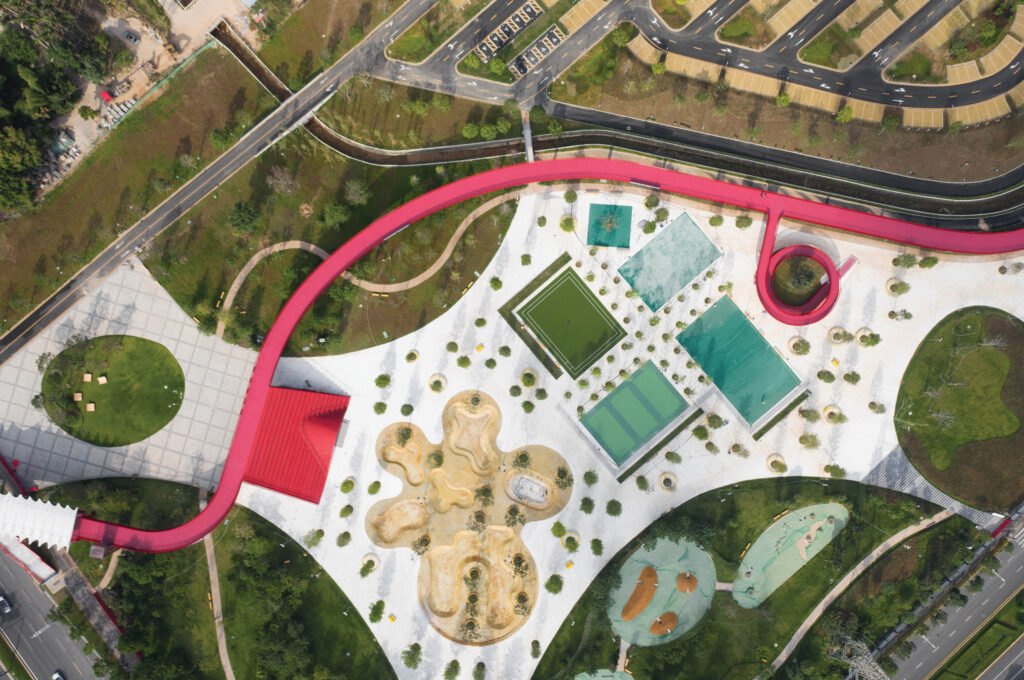



Manh: I think, very easy. Our government starts very smart, okay. One day, they announce: there’s a highway there, coming up. There’s an airport there, coming up. And then suddenly, the people are buying, looking for the profit opportunity. The policy makes sure everything is going to be ready, everything is good. The environment will be much, much better than the big city. So, for the next five years, our big cities will change in a positive way. The developers also compete to build the infrastructures. We pay toll; who cares? We get the good roads, we have the great environment, better living environment. So, I’m sure these development models to minimize congestion in the big cities will be effective for Vietnam.
Florian: So, short summary: we have maybe China and Vietnam on the one hand and the Philippines and Indonesia on the other. And the question is, who has the upper hand? It seems like, in my example, the government has the developers under control on the one hand. On the other hand, it’s more like the conglomerates have the government in control. Therefore, city planning is probably driven by developer interests than the greater good or public good. Oh, Jason, you haven’t said anything for a long time.
Jason: I want to keep away from Chinese discussion as politely as possible. I have mixed feelings about that as someone who does projects on the mainland and lives in Hong Kong. And I would say our economy here is very much profit-driven, but very much in control by the government. So, kinda bit of both, in some regards.
The reality of government in my life, as someone who grew up in the United States, is it’s very much capital-driven. So we have to be careful using examples from places like mainland China or the Netherlands that both have an extremely powerful governmental system, which has huge upsides.
But, the ability to do things like that in places like the US, or Indonesia, and the Philippines is just, at least in my opinion, not realistic, as a real model of how things can be. So, in terms of what we can do as architects, yes, I totally agree with learning from our neighbors. But let’s be contextual about what we learn and what we can get from those things.
I certainly think we architects can be much savvier about—since infrastructure was mentioned—the benefit of connecting the countryside and cities. But in Hong Kong, in the protests a year ago, people realized and acknowledged that the transit system here, the MTR, an extremely successful, world-renowned example, is a representation of power, which maybe dictated how land development happens, how people live their lives.
So I think we need to be very savvy about what we advocate regarding infrastructural systems and how that works. I’m not sure I’m giving you a coherent answer. I’d be a little cautious about what I say, but I think we have a significant role, and we have to leverage that power. Still, it’s also within certain bounds, and we have to be careful which references we give our governmental realities because some of them are just not realistic. I guess that’s what I want to say. And I’ll happily pass it on to what others here suggested. I’m happy to listen.
Well, maybe I’ll just add that I appreciate what Martin said about Doughnut Economy, Kate Raworth’s book because cities are really just the physical manifestation of the socioeconomic structure that we built for ourselves, right? So, capitalism is, of course, what has been the main driving force. And we talk about developers prioritizing profit. We cannot fault them for that. That’s what business does. Markets behave their own way, and they will seek opportunity, and they will exploit it when they find it if you leave them alone. Now that’s probably where the government can come in because the government should look after public welfare or the public good. So these two have to go hand in hand.
Too much regulation can restrict the ability of capitalism to optimize so that it can distribute wealth. I mean, it’s about wealth generation, right? The other thing is, maybe we have a very limited view of what wealth should be, and that has been the prevailing mindset that has governed our socioeconomic structure and, therefore, our cities. So these new ideas of doughnut economics, circular economy, again, we realize that its time has come.
Cities have encroached into not just the countryside but also the natural realm. Where will we get resources to continue with this relentless pursuit of growth? It cannot be infinite. So we now have to take stock and find out what, where do we derive value? Monetary value is not, cannot be the sole measure of value. So we have to sort of realign this whole economic paradigm that we have built because we now see it is simply insufficient.
William: Here’s a question for everyone. Your thoughts on gentrification, especially since we’re talking about developers and celebrating a kind of post-capitalistic world. What role can architecture have, and how do we detach architecture from being primarily financially driven.
Joel: That’s a tough question, William. How will capitalism evolve? We don’t really know what the alternative is to capitalism right now. On gentrification, we see again the manifestation of big business easing out the more traditional and more affordable types and the low-income renters. Whether it’s a redevelopment of an old section of the community to give way to new buildings and therefore eases out the older occupants or the flip side of that. That is, when there’s a new development, let’s say an infill development in a city, one thing an older neighborhood does is provide the supply so that it absorbs some of the rent. So it’s the older homes that can still offer the more affordable rent.
So we have to look at the whole ecosystem. We are concerned about old neighborhoods gentrifying because there’s a new development coming in, but what is that really doing in terms of supply and demand? It’s very possible that when new development comes into an old section of town, it’s actually preserving the low rent values in the older housing supply there. So, you know, one needs a holistic view of the impacts of development.
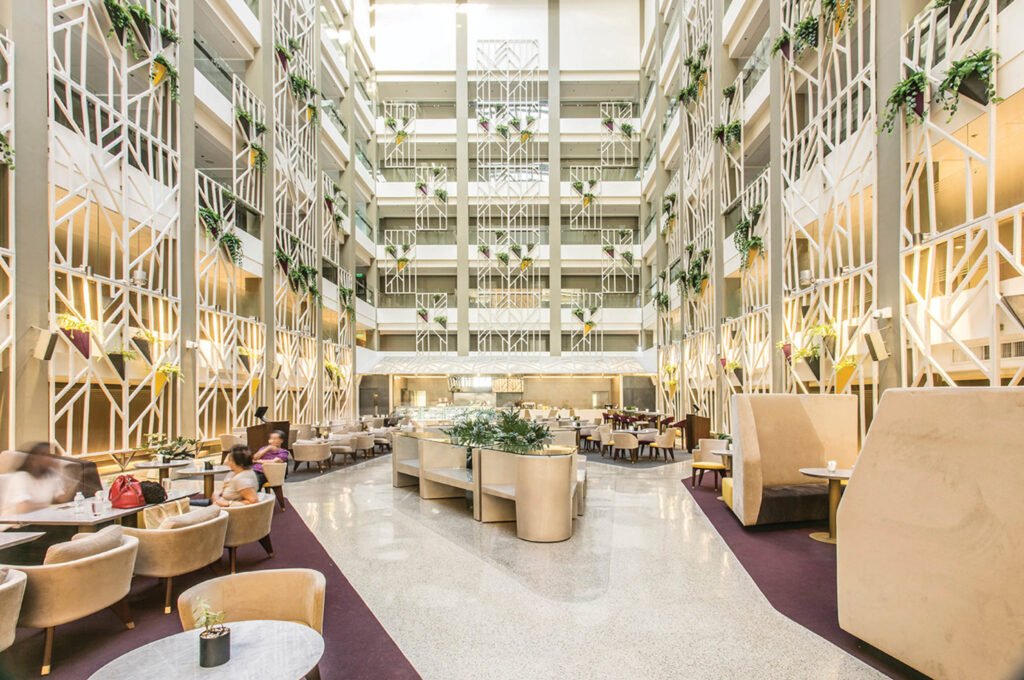

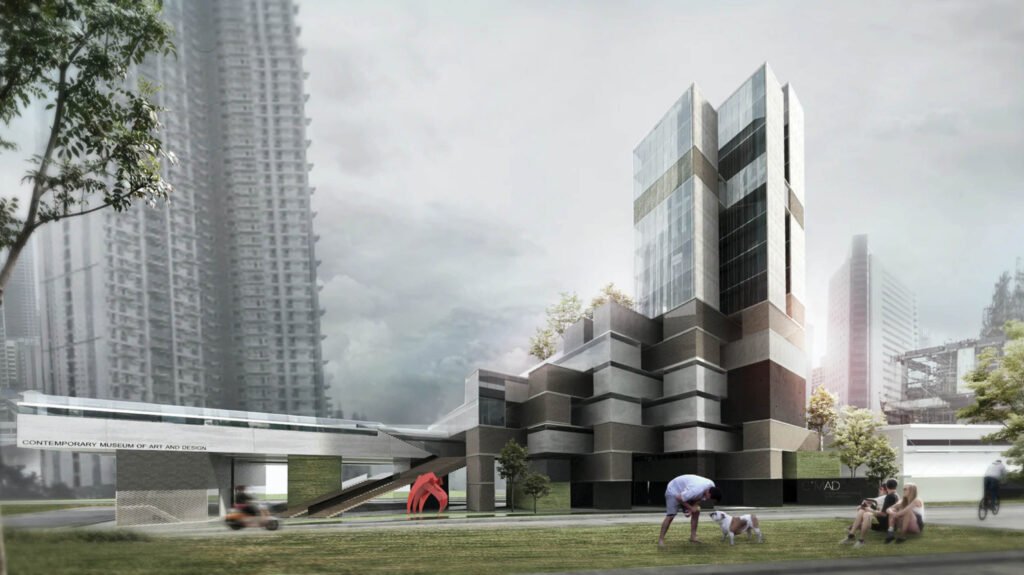

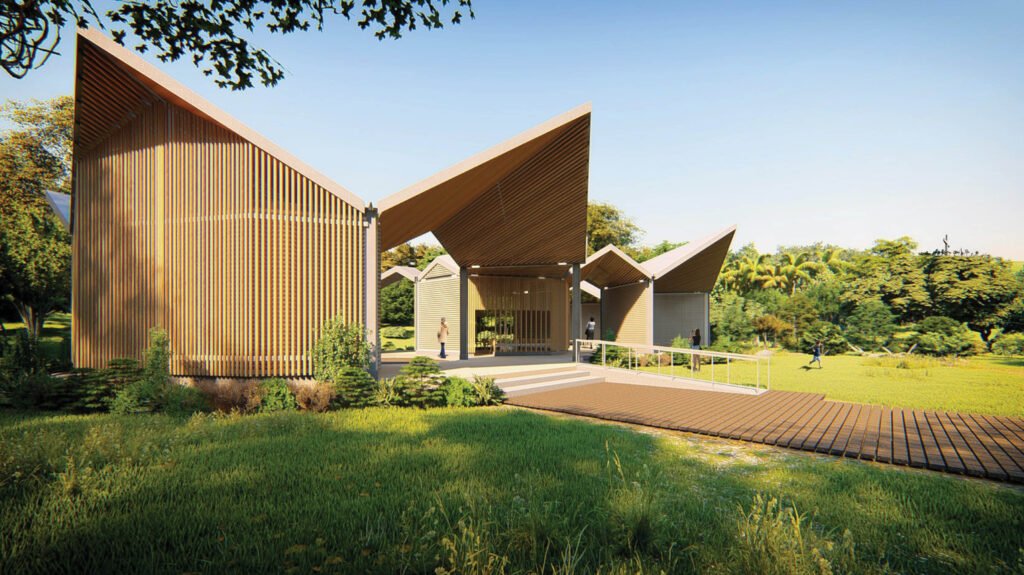

Martijn: I agree with that, Joel. It’s not black and white, and I’m not to say what a new model should be. There is somebody in our chatroom who is putting a standpoint forward, which I like to share with all of you because I think he’s very right. I don’t know this person, but he says: “Architects are to be involved in neighborhoods and city development, not only doing buildings.”
I think that’s a great starting point. As our audience member just mentioned, architects can be involved in the building of neighborhoods and communities, rather than just providing the task of meeting the demands of a developer in the form of a building. And then the ideological standpoint he mentions, “For whom?” should prevail in this discussion. And I agree with that. Who are we building these buildings for? Who are we making these neighborhoods and cities for? Are we making them as investment vehicles, or are we making them for people to live in?
And again, I lived in Holland for the first 21 years of my life, then I lived in the United States for one year, in Los Angeles. I love it there, it’s a beautiful city, there’s sunshine all the time, there’s fantastic food, amazing people, but half of the city is just terrible, you know. So much poverty and homeless people and drugs and crime. And I was so shocked to see that as a person from Holland. I was never, I didn’t know that was a result of capitalist cities—oh my god!
And then I moved to China a few years after that. I thought China was this horrible, depressing place where the whole population was suppressed. That’s what I read. But then I came here, and everybody was like, really building a country together.
I don’t say what’s right or wrong, but the effect of building together on both the quality of your environment and the city’s quality is tremendous. So then, this gentrification is also not happening so quickly because it’s a community of people who planned it together. Han and I are a typical example of gentrification, right? Because we are more affluent people that have come to live in older, downtown neighborhoods. The local people support us; we support the local people, and we form one community. Rather than, you know, a developer imposing on us their development model. No.
Han: I spent most of my working life here, so I can only speak for what is happening here in terms of what the developers are doing in gentrification. Because Beijing is an ancient city, obviously, gentrification has been happening for a long time now. And the previous models that we have seen, whether from private developers or government developers, have always been gentrification. Basically, we tear everything down, give you something new, or put a new face on everything. And we try to drive some of the old neighborhoods out to clear more space for higher-value customers.
But they have a new model now. The goal now is, and this might have to do with government policies, that when a developer has to come in and do whatever is necessary to make a profit, they also have to invest in a certain amount of public infrastructure and upgrading of the existing neighborhood, et cetera, et cetera. So this has been a really positive move, and we have seen this happen quite a lot, primarily from government developers and private developers.
Together, they consult with the neighborhoods because they recognize more and more that the value and the success of their developments depend significantly on the support of the local community. So they don’t just drive them out anymore. Because if they don’t have the support of the neighborhood, the development runs into trouble. So I think we’re seeing a new way of doing things, and we hope that this will help serve as a new model for gentrification. There are many sides to gentrification; it is not always bad. There are positive effects. And the reality is, in a lot of cities, the ordinary people need modernization. They do need upgrading.
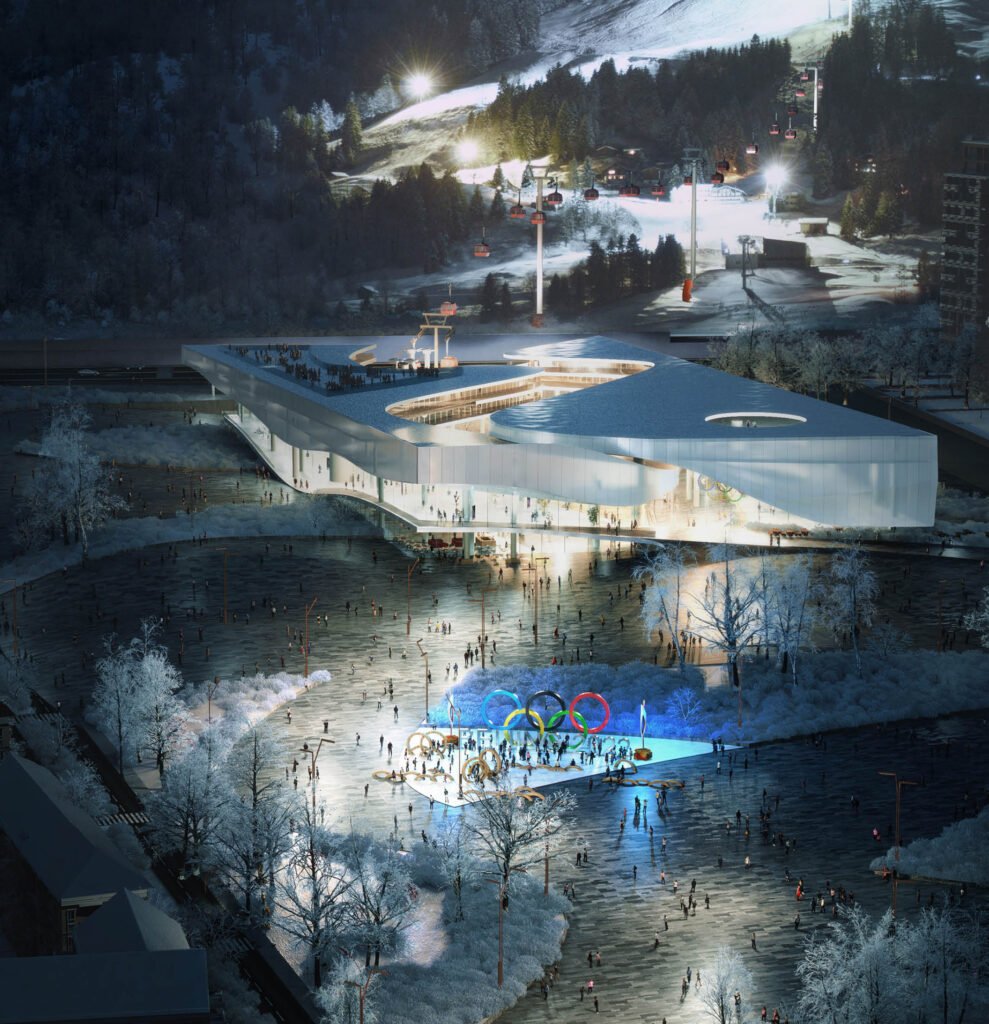
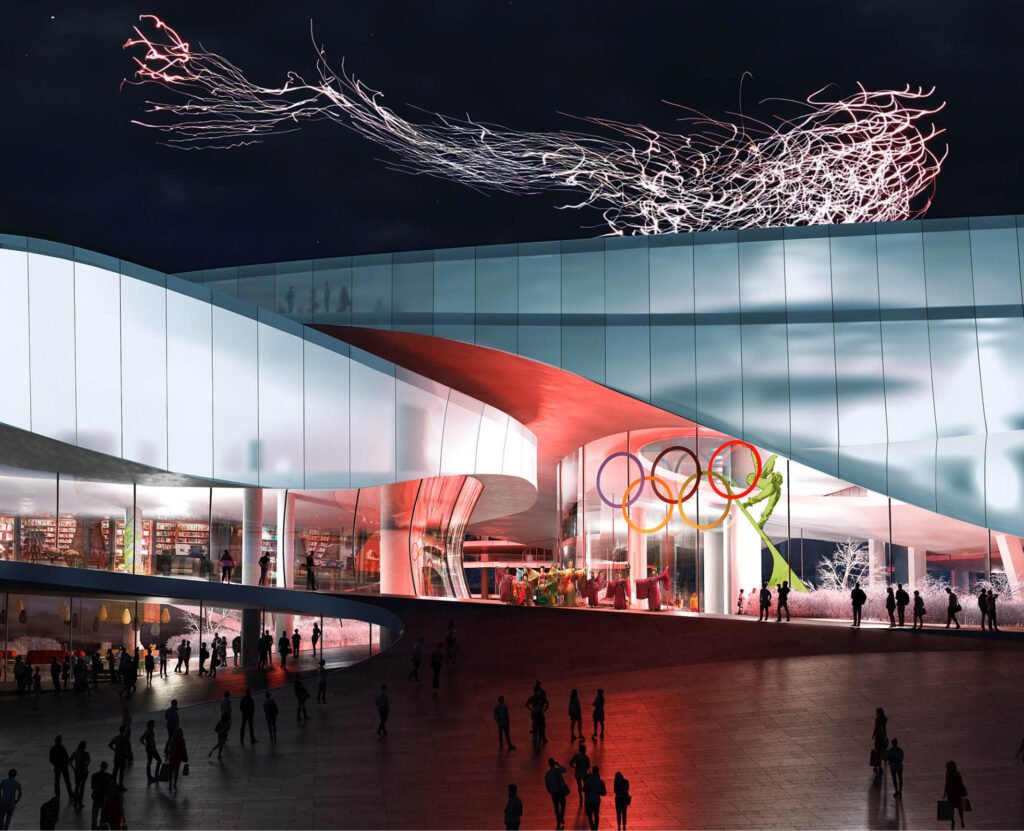
Moderator – Arvin: Next question, how can we maximize the use of spaces that remained idle during the pandemic, such as unused office buildings, parks, school grounds, and stadiums.
Denise: The name of the game now is flexibility, adaptability. We see this in every typology, whether it’s residential, institutional, commercial. For these spaces to be used and not be white elephants, we need to adapt their uses. For example, in the US and other countries where their vaccination drives are full force, they’re using stadiums as health centers. We co-locate to adapt and be flexible moving forward, so these spaces don’t remain unused spaces nobody benefits from.
Joel: There’s ample opportunity for streets and parking spaces because of the reduced dependence on the automobile. In other countries, we’ve seen them used for alfresco dining or parklets. What we’re seeing is that streets should be for everyone. It’s part of the city’s open space. In fact, for many local government units, that’s the only public asset that they have. So maximizing the use of streets for multiple activities for most people, not just cars.
William: I was just thinking whether architecture seems to be moving towards a sense of impermanence, you know, just for the moment, especially now that we’re adapting so many buildings and creating temporary structures because of the pandemic. Is that where architecture will be going? And is that something we want to do as architects?
Martijn: Two things. One, architecture is not going to be impermanent. We in China have not had any temporary COVID buildings because COVID just really didn’t affect society much here. It’s comparable, I guess, to Manh’s experience in Vietnam, as he just shared earlier. We have some lockdowns, but very minor, and emergency hospitals were set up on the outskirts of cities. So that’s one part.
Two, the role of architecture is always to respond to the needs of society at a particular moment. And that is the problem. The buildings here now are responding to needs from 50 years ago, and the needs have changed. Society has changed. We have internet now. Mobility has changed. The way people are educated has changed. So we’re working on updating or upgrading our cities to be fit for that change. And that is still also permanent, up till a certain point. So it’s permanent for the needs now.
The difficult question is, what are the future needs of this city? What are we changing towards? Those are questions we ask our students, who will have their own offices 20 years from now. So what are we training them for? We don’t teach them just to, you know, design endless offices and hotels and houses because we are already doing all of that now.
So what are we training them for? It’s to understand the needs of society and understand the role of an architect in building communities in a sustainable manner. And part of that is creating or dealing with existing buildings and arising needs. And I think as architects, that is our role—to serve society and be a part of society. It’s not to build buildings for yourself.
The question was, “Is that where architecture will be going? And is that something we want to do as architects?” I think it’s kind of a wrong question. It’s like asking a doctor, do you like to work with people’s hearts? Yeah, in a way, you like it because it’s your job. But would you rather not have people being ill? Then, of course, people would love to have no need for your job. So this is how I see it; we are here to help society live in a good, harmonious, and equitable way.
Florian: I would like to pick up on how cities might change or have to change. And again, this is different from country to country. I’m originally from Germany, I’ve been to the Netherlands, so on and so forth. So, on the one hand, you’d have the social distancing measures and wearing of masks, which work perfectly fine here in Singapore, where I am currently. Here, it works. It’s entirely under control. But if you take Germany, it’s not, at the moment.
So now people go out and do all these researches about public health—how far apart do you have to be outside? Are you under the open sky? Do you have UV light? Is there a breeze? If so, it is less dangerous having a public life and having meaningful interaction with human beings. It’s much better in the outdoors than in the indoors, in facilities like the cinema, indoor facilities where people gather in tight spaces.
So maybe it really is a moment, and when I also look back when cities developed in a certain way, very much under the premises of the day regarding hygiene, you know. And then we have, like William mentioned in the brief for this panel, the Garden City.
So what about if we have buildings structures, which are not needed anymore, because we cannot gather there and meet and work healthily, at least in these more effective countries. Why not take density out of cities, you know, provide much more green, make cities more healthy, and give it back to nature rather than rethink what we do with building substance, which might be not needed anymore.
The whole service industry is growing off delivery. I lived at home the past year, I didn’t go out at all, and everything got delivered from the supermarket. So there’s no need anymore to go to the supermarket if the infrastructure is there. So maybe public life will happen much more on a neighborhood level rather than on a city level.
Manh: The pandemic has been hard for everybody worldwide. But at the same time, everyone tried to use what they have for the best, for instance, today’s technology. Everyone tried to work from home, only move out when absolutely needed. So, therefore, people will rethink, why should we make such a big office? Why should we make such a big, public facility? And then, if you don’t build a lot, you don’t waste a lot.
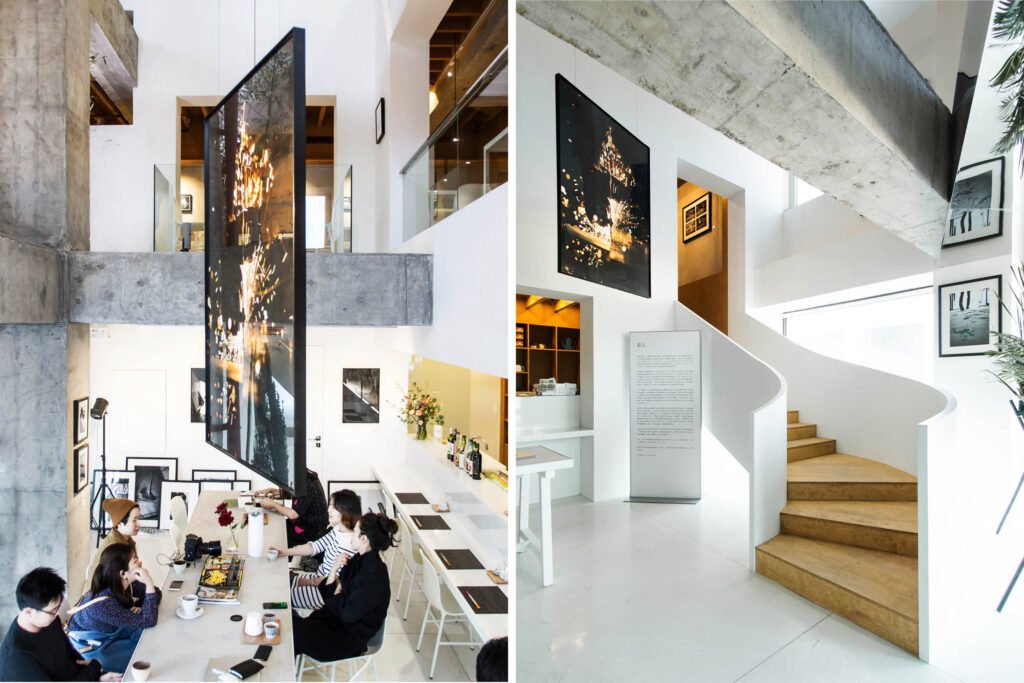

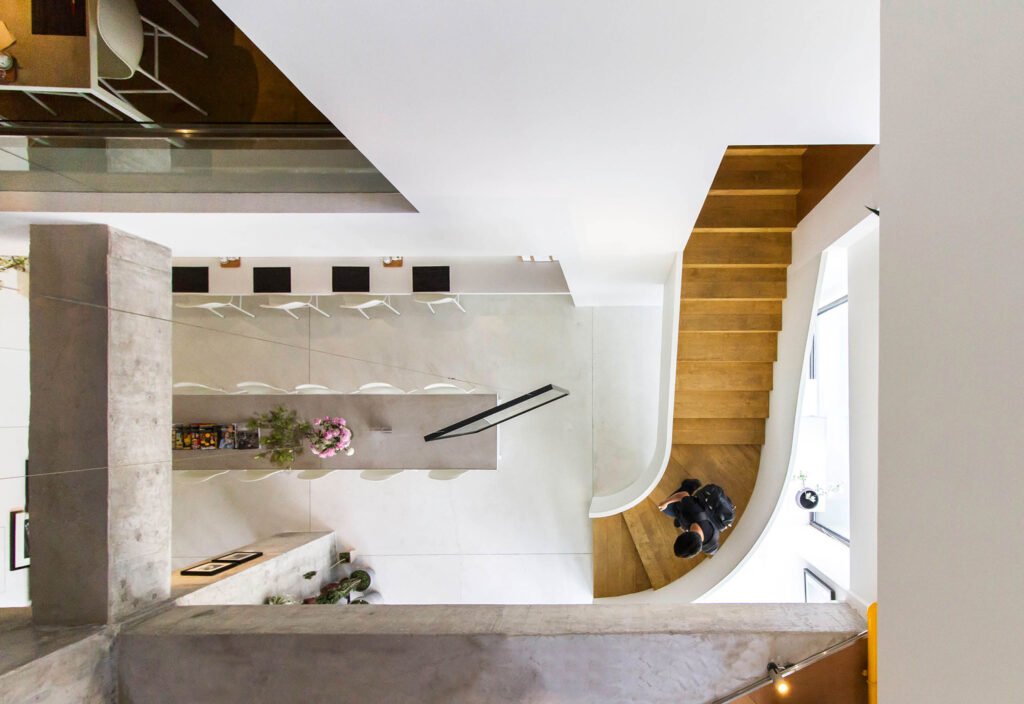

Jason: Florian, you said to provoke a bit. First of all, I think in terms of COVID, I’m not very hopeful, to be really honest, that it’s going to cause a positive change. The thing I think is encouraging, again being from the United States and China, where I currently live, I really hope it’s been a wake-up to the world that we are all connected. We need to think more seriously, not just about our medical systems, but about the reality that we travel. And we can’t keep putting up barriers in terms of our visas. So that’s one thing I’m hopeful for.
On the other hand, I’m a little worried again. Well, you asked. I know, I know, I know you’re all shaking your heads.
Florian: Well, trying to get in Singapore, it’s crazy getting here.
Jason: Yeah, I know. And we’re all going to put up walls even more like the Swiss have been doing for years, and we Americans are the worst. Secondly, in terms of the post-capitalist scenario, I would love to think we’re going to wake up from that if we do want to get people to not tear down buildings, if we do want to solve gentrification, at least in some regard. But as Han said, it’s not all bad. I’m totally with her on that.
And then on the last thing, what is the future of architecture? My take is the future of architecture is super important, and it’s about making buildings. And I think it’s really great. I’m an architect, and it’s really great that architects are interested in larger systems and things like that. But I think it’s really important just to design really nice, high-quality buildings.
Like you said, William and Denise, I do think we need to be more flexible. But the reality is—all these concerns we’re talking about—they’re not what architects are primarily trained in. Addressing these issues is more led by urban planners, urban designers, and landscape architects. So when I think about the future of architecture, it’s admitting that architecture is more object-based and acknowledging that it is becoming secondary to solving the world’s problems. It’s more of a series of systems—landscape, urban planning, urban studies, or whatever you want to call it because it’s still evolving.
Whereas architecture has always been a bit more object-based. There’s nothing wrong with architecture becoming a less important profession and allowing others to be more dominant in how we shape our landscapes and our cultural cities to make sure we all move forward in the future, economically, ecologically, and so on and so forth.
So that’s my attempt to stir things up! If I say, “Architecture is not that important,” that usually gets someone to say, “Architecture is everything.” Who wants to pick it up?
Joel: Well, architecture is something. We are architects, planners. We’re about the creation of space in a broad sense. While we are in the middle of this crisis, we must try to imagine what the world and cities should be like when the crisis is done. We have to think about the spaces we want to create and, as mentioned earlier, for whom and for what.
So this is an opportunity for us to see ourselves on this cusp in the development of society. Real estate is also in the business of producing space. Now, pre-pandemic, we’ve seen how real estate can really get out of hand. We’ve seen how land is not just considered for its use and value, but what has predominated in real estate is people buying for speculative reasons and not for use. And that created this rapid escalation of prices that eased out and marginalized several people from the cities.
Then when the pandemic came, all of a sudden, we had so much inventory, we produced so much space, and they’re not for what’s essential. So as Denise mentioned, this is really a time for us to take stock and ask just what really is necessary? What is of value? And admit that it is not the exchange value that should predominate the production of space and the creation of cities as we move forward.
Florian: I would like to pick up what Jason said about systems thinking. One of my key learning points when I was studying in the Netherlands, is the value of landscape architecture. Because when I was studying in Germany, it was more or less the notion of decorating a city with trees, right.
And suddenly, architecture, like so many times before when the needs changed, technology changed, the modes of production changed, now needs to focus differently. And I think you’re absolutely right with landscape architecture becoming vital to the systems for our management, the strategies for biodiversity, and maybe growing food in cities.
So, architects need to learn how they can contribute so that the buildings are part of the system and not merely objects. And we need to rethink how we operate with our buildings. Of course, we need to make money, but how do you use part of this money? We try to do many projects meant to help others, working with CSR funds, for instance. We try to find smart solutions or intelligent solutions. And, if we could move forward, people, no matter which background, could learn to have a similar understanding of always keeping the greater good in mind. So whatever we produce, it does not harm others but creates a really win-win-win situation. And if everybody would start to act more in this direction, you know, we could solve our problems instantaneously.
Denise: On Jason’s statement about architects not being so important, one of the ways that we can be really important now, instead of looking out and out and further and further at larger scales, is to look inside. That’s really important now—everyone’s so aware of their interior environments and how that affects well-being and health.
Architects can really make an impact here, not just looking outward at the macro scale, but looking at interiors and the micro-level of materials, of light, of the elements we put into our spaces where we live, work, and play so that we generate spaces that are productive, delightful and liveable, right? So, I think we need to start at that scale before we can create liveable cities. That’s where architects can focus their skills and efforts and contribute. So, it’s time for us to redesign and reinvent our interior spaces, especially those buildings with spaces that no longer are being used as much, and starting with our own spaces at home.
Ernest: I think the takeaway here is that architects are basically prophets. Prophets that anticipate the needs of the people. Some clients might even see those needs. So I think as architects, we have to have the foresight to identify what changes would happen in our country on a macro level or the micro-level. And echoing what most of you have said, the flexibility of spaces is essential because you can’t really tell what new needs may arise. Because I’m sure, most of us have not designed architecture for the pandemic. We were not thinking about pandemic-ready design before 2020, right? So, we must anticipate the needs for the future and be flexible enough to accommodate needs we haven’t foreseen.
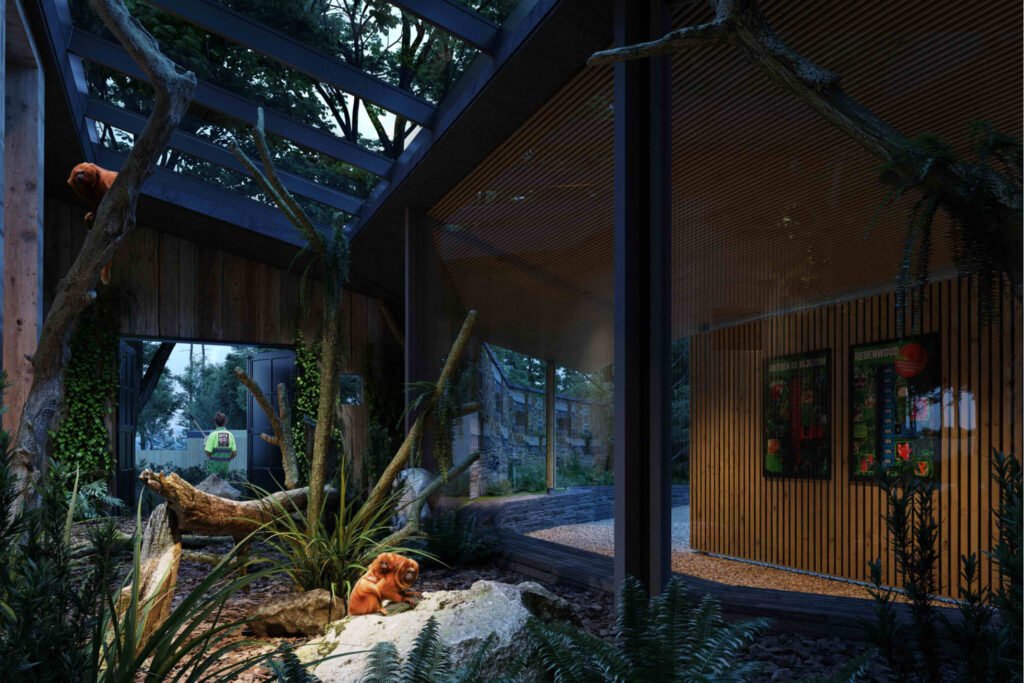

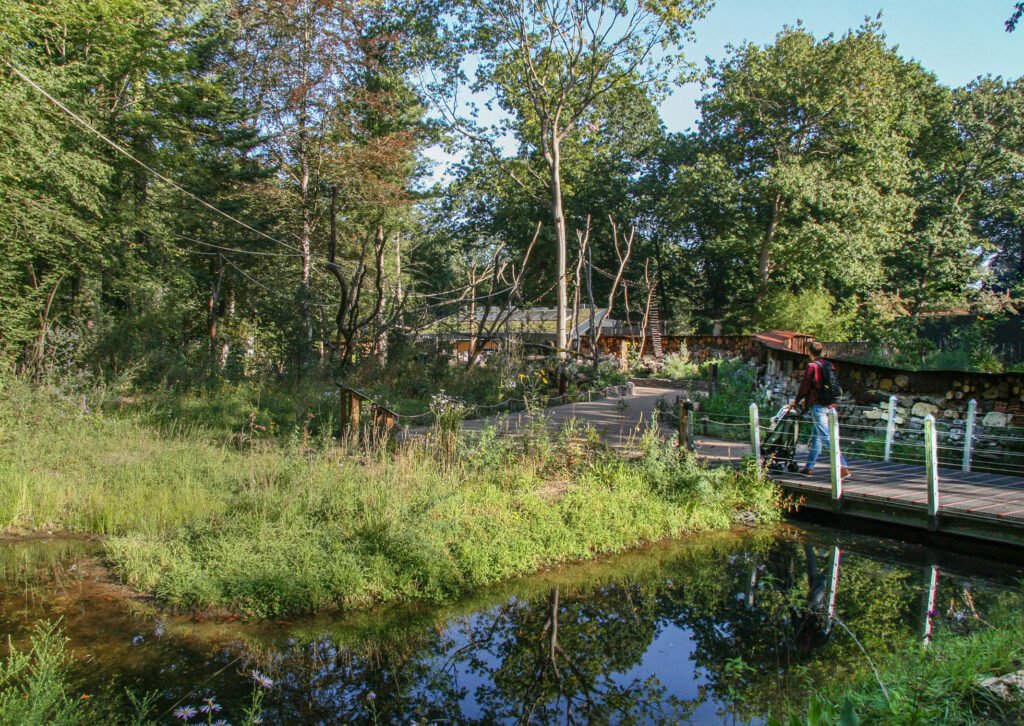

Moderator – Berly: Last question. What will our cities look like in 2050? Jason?
Martijn: Good luck!
Jason: I’m just going to skip that question and let the next person take it because I’ll pick up on what Denise said, which I quite liked. I really like what Denise said about interiors and bring up an interesting anecdote.
Here in Hong Kong, when the protests were happening, what was extremely interesting was that many protesters didn’t want to do it in the streets. They did it in the malls where they knew the mall security was on their side. So many of our friends who were protesters were like, no, no, no, we don’t want to do it in front of city hall. We’re going to the mall. It’s way safer. The cops won’t be allowed in. So that was intriguing.
In terms of money—sorry, I’m really ignoring the question—yeah, all of us architects need money just like anyone else to survive in society. However, I think the way we bill is insane. Architects are part of one of the biggest money-making industries on the planet. Either large form government or massive developers. And we charge the same as the janitor, basically for a one-off installation fee.
If we really want to be a part of changing things, we need to take part in the risks. And that means we need to re-do our fees: that we get rewarded if we do something that helps, and we get punished if it doesn’t work. Unfortunately, architects and architecture societies generally don’t do this. But I think if we’re really serious about making a difference, we need to take risks in it. And then that will allow us to have more voice in these sorts of things. But I think now we charge ourselves as a one-off designer fee.
And now someone else can pick up on what our cities will look like in 2050.
Florian: 2050. One thing we did not discuss is the aging population. Here in Singapore, it’s a huge issue. So probably we’ll have a lot of ramps and travellators, escalators. I mean, this is not meant ironically, but as an image of how we cater to the aging population. Perhaps not yet in Indonesia or the Philippines because you still have a young population.
We also didn’t discuss the rising sea levels. It will be a massive issue. Parts of the city will not be inhabitable, and it will cost a lot of money, and not every country can do it like Singapore, for instance, to reinforce the city, to prepare it by brute force.
Manh: Every country is different, but I do agree with Florian. We will have to deal with the aging population and rising sea levels. There are many other issues, and to be honest, even if you ask me tomorrow, I don’t know what it will be. In my imagination, I think Vietnam will have three, four, or five different levels of transportation. That’s my imagination for 2050.
Martijn: I agree entirely with Jason that architecture is irrelevant in the end. Architects are irrelevant to defining the future of the city. To the problems we are facing as societies at large. We are irrelevant if we stick to just thinking that our goal is to make buildings. Architecture is a means; it’s not a goal. So architecture is a part of going to this future in 2050 or in whatever year.
Beijing 30 years from now will be a really nice, liveable city because there’s so much at stake here to make it that way. But, unfortunately, I think other cities in the world, like my hometown, or let’s say Amsterdam, will be more and more unliveable because there’s so much trouble—social, cultural, and economic troubles that are going play their hand in the city.
Focusing on what architects can do to get to 2050. As Jason said, we need to expand our horizon to the larger scale, meaning we should understand the environmental systems at play. That’s why, when we work in Holland, we work as landscape architects, master planners, architects, and interior designers. And there’s no problem because we can go from this large-scale level that Jason mentioned into the small-scale that Denise said. After all, they are equally relevant to making liveable cities. And it should be more of a bottom-up design process.
That’s as she was saying just now—start with the experience of making our home liveable, of making our neighborhood liveable. And making the people around us have a good working environment, a good teaching environment, have a good living environment. And from there on, we can spread out and make our cities more liveable. And I would hope that our cities in 2050 would be more equitable because of a bottom-up participatory, community-driven development process. But I don’t think that will be valid for all cities around the world, unfortunately.
Joel: Metro Manila in 2050. Quite honestly, it kind of scares me. Because I’ve lived long enough to remember what Metro Manila was 30 years ago. So that was just 1990, and it was less crowded, we had fewer buildings, less traffic. And now here we are, and we’re trying to project 30 years forward.
What has changed significantly, as we all know, is technology. The other main driving forces necessitating or creating change, as we all know, are the environment and climate. So, this COVID crisis gave us a preview in rapid time of what the impact of a major global calamity would look like, which is climate change.
So I echo what Manh said. I cannot visualize what future cities will look like, but we do have aspirations. We hope that, for instance, what we have learned from this COVID crisis will teach us how to make our cities respond better. And I also echo Denise because what we’re seeing is really an issue of scale. The COVID crisis, the pandemic, and the lockdowns showed us to look at and appreciate the city on a smaller scale.
Now the notion of a 15-minute city is prevalent, and it’s really about scale to achieve mobility. Things you can reach just by walking all of a sudden are critical. So I really hope that after this crisis, we know better. In 1990, developers were building villages, gated communities in the hundreds. Why? Because that is what the market was looking for. Single-use enclaves catering to just one niche of the market in the hundreds of hectares. Now that’s unthinkable. Thank goodness.
So, maybe, we’re learning along the way. Markets are being shaped, and I hope this crisis has educated all of us to rethink the scale of our cities, the scale of our neighborhoods. Now, we cannot talk about inclusivity and equity without talking about scale. So we have to; we really have to recalibrate our thinking about scale to better respond and have a more responsive city in 30 years, if not sooner.
William: Thank you guys, great talk. •
Kanto.com.ph is a proud co-presenter of Anthology Festival 2021. This transcript was produced in support of the Festival and its organizers, WTA Architecture and Design.



